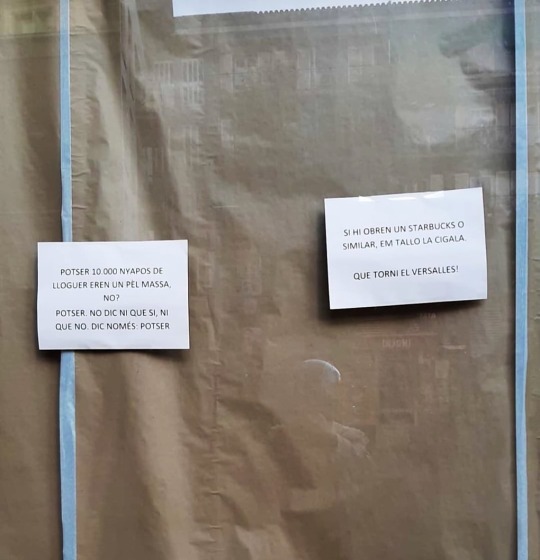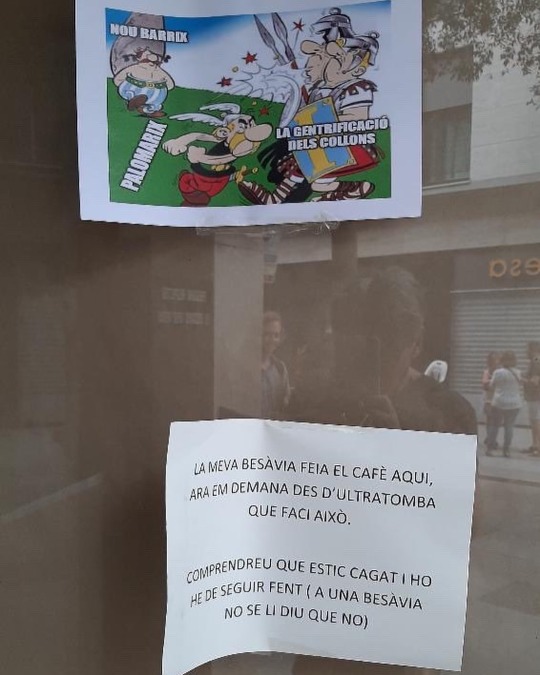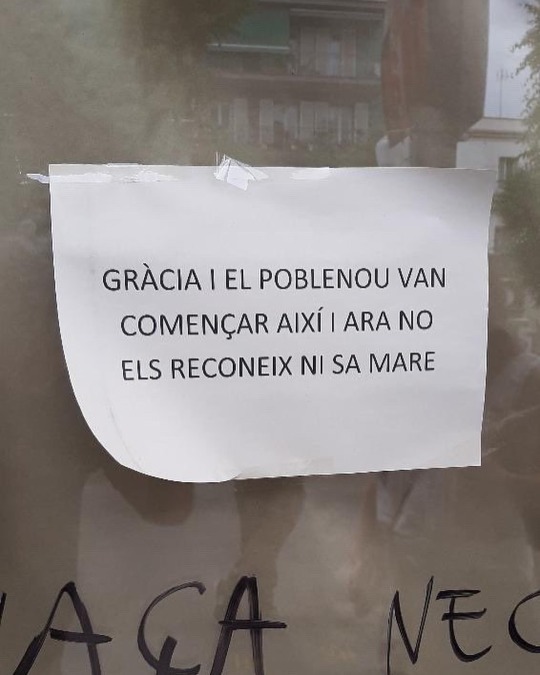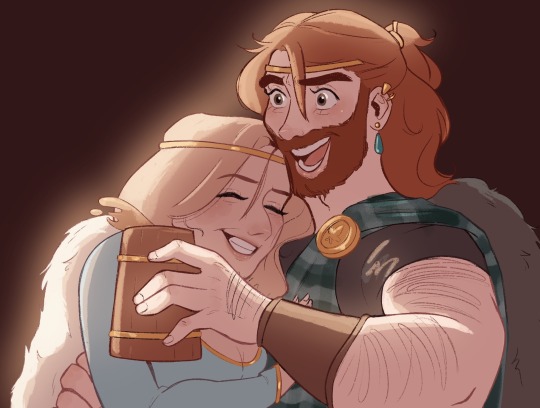#Gaulish language
Explore tagged Tumblr posts
Text
Awesome 🔥
#french history#history of france#history blog#france#up the baguette#gaulish history#Gaulish language#linguistics#gaulois#archeology#archeologie#Gallo-roman#Gaule romain#roman empire#Roman gaul#Curse tablets
1 note
·
View note
Text

Gaulish Latin
Car, to change, piece - English borrowed these words from French, which in turn inherited them from Latin. But they weren't native Latin words. Latin got them from Gaulish, an extinct Celtic language that was spoken in Gaul, roughly modern-day France, Belgium, Luxembourg, and parts of the Netherlands, Switzerland and Northern Italy. Gaulish was a great-aunt of Welsh, Irish and Breton. Today's graphic tells you about six common Romance words of Gaulish origin, and their modern Celtic cognates.
#historical linguistics#linguistics#language#etymology#english#latin#french#lingblr#catalan#spanish#portuguese#gaulish#welsh#breton#proto-celtic#irish
69 notes
·
View notes
Text
#gaulish prayer#gaulish paganism#celtic pagan#spirituality#gaulish#gauls#liminal vibes#language of our ancestors#ancestor vibes#ancient europe#ancient history#gaulish polytheism
5 notes
·
View notes
Text

Gaulish Translation 1 :
Source : Arknights https://www.facebook.com/photo/?fbid=137187401178598&set=pcb.137188081178530 Auteur/Author :@Lalvice_沙離dr在銭鎖双狼 https://passport.weibo.com/visitor/visitor?entry=miniblog&a=enter&url=https%3A%2F%2Fweibo.com%2Fu%2F5207773548&domain=.weibo.com&sudaref=https%3A%2F%2Fwww.bing.com%2F&ua=php-sso_sdk_client-0.6.36&_rand=1675412986.2487 It's not an "litteral" translation because some words aren't simply existing in reconstructions or are attested, so I tried to fill the gaps by modifying a little bit the dialogs. ----------------------------- Ce n'est pas une traduction "littérale" car certains mots n'existent simplement pas dans les reconstructions ou attestés, alors j'ai essayé de combler le manque en modifiant un peu les dialogues Translation (French-English) : Silverash : Il y a ici un "complément de cause", alors quel mot je dois mettre Exusiai peut-tu répondre ? There is here an "adverbial phrase of "reason", so which word should I put ? Exusiai, can you answer ? Exusiai : OUI, c'est...c'est/YES, it's...it's Mostima M.Silverash a demandé quelle était ta nourriture préré Sir (Lord) Silverash asked what is your favorite food Exusiai: Oh ! (ma) nourriture préférée/Oh ! Favorite food ! J'aime les tartes au pommes ! OUI ! I like apple pies, YES ! Silverash : Sors de (cette) salle ! Get out of this room
10 notes
·
View notes
Text
Etymology of the day
Horn
From: Proto-Indo-European *ḱerh₂- (“Head, Horn”)
Related descendant words:
English: Keratin (through Ancient Greek κέρας (kéras, "Horn") + -in, "Horn-like" material)
English: Rhinoceros (through Ancient Greek ῥῑνόκερως (rhīnókerōs, “Nose-horned”)
English: Cornea (shortened from latin cornea tela ("Horned tissue"), from cornu ("Horn"))
English: Carat (Ultimately from Ancient Greek κεράτιον (kerátion, “Hornlet,Carob seed”), through Arabic قِيرَاط (qīrāṭ, “carat, similarly small units such as inches”), Italian carato and Middle French carat)
English: Carnyx (Celtic warhorn (instrument), from Late Latin Carnyx, originally from Gaulish Carno- ("Horn of an animal"))
Czech: Srna ("Female roe deer")
Swedish: Sarv ("Male reindeer", from Nothern Sámi Sarvvis, possibly in turn from Proto-Balto-Slavic *śirwas)
Italian: Cerebro ("Brain", from Latin Cerembrum ("Brain, Skull"))
Welsh: Carw ("Deer", from Proto-Brythonic *karw ("Deer", "Stag"))
Lithuanian: Karvė ("Cow", from Proto-Balto-Slavic *kárˀwāˀ (“cow”))
#etymology#language#english#czech#swedish#italian#welsh#ancient greek#latin#lithuanian#gaulish#arabic
2 notes
·
View notes
Text
it's so weird to compare french with other romance languages and spoken latin. because like. so i heard a song in reconstructed classical latin recently and i was like "yeah i can see how spanish came from this. i can see how italian is the logical conclusion of this language. but french? ?? what"
#a lot of french's difference from the others is attributable to gaulish in some way but the influence is EXCLUSIVELY grammatical#french has less than 500 words from gaulish today but sooo much of its differences come from using gaulish grammar with latin vocab#although actually that isn't too weird and it's in fact p similar to other celtic languages' influences on english#sorry for linguisticsposting on main. it will happen again
1 note
·
View note
Text
For any of the people out there who might like looking at languages.
Okay, so:
Latin has this word, sic. Or, if we want to be more diacritically accurate, sīc. That shows that the i is long, so it’s pronounced like “seek” and not like “sick.”
You might recognize this word from Latin sayings like “sic semper tyrannis” or “sic transit gloria mundi.” You might recognize it as what you put in parentheses when you want to be pass-agg about someone’s mistakes when you’re quoting them: “Then he texted me, ‘I want to touch you’re (sic) butt.’”
It means, “thus,” which sounds pretty hoity-toity in this modren era, so maybe think of it as meaning “in this way,” or “just like that.” As in, “just like that, to all tyrants, forever,” an allegedly cool thing to say after shooting a President and leaping off a balcony and shattering your leg. “Everyone should do it this way.”
Anyway, Classical Latin somewhat lacked an affirmative particle, though you might see the word ita, a synonym of sic, used in that way. By Medieval Times, however, sic was holding down this role. Which is to say, it came to mean yes.
Ego: Num edisti totam pitam?
Tu, pudendus: Sic.
Me: Did you eat all the pizza?
You, shameful: That’s the way it is./Yes.
This was pretty well established by the time Latin evolved into its various bastard children, the Romance languages, and you can see this by the words for yes in these languages.
In Spanish, Italian, Asturian, Catalan, Corsican, Galician, Friulian, and others, you say si for yes. In Portugese, you say sim. In French, you say si to mean yes when you’re contradicting a negative assertion (”You don’t like donkey sausage like all of us, the inhabitants of France, eat all the time?” “Yes, I do!”). In Romanian, you say da, but that’s because they’re on some Slavic shit. P.S. there are possibly more Romance languages than you’re aware of.
But:
There was still influence in some areas by the conquered Gaulish tribes on the language of their conquerors. We don’t really have anything of Gaulish language left, but we can reverse engineer some things from their descendants. You see, the Celts that we think of now as the people of the British Isles were Gaulish, originally (in the sense that anyone’s originally from anywhere, I guess) from central and western Europe. So we can look at, for example, Old Irish, where they said tó to mean yes, or Welsh, where they say do to mean yes or indeed, and we can see that they derive from the Proto-Indo-European (the big mother language at whose teat very many languages both modern and ancient did suckle) word *tod, meaning “this” or “that.” (The asterisk indicates that this is a reconstructed word and we don’t know exactly what it would have been but we have a pretty damn good idea.)
So if you were fucking Ambiorix or whoever and Quintus Titurius Sabinus was like, “Yo, did you eat all the pizza?” you would do that Drake smile and point thing under your big beefy Gaulish mustache and say, “This.” Then you would have him surrounded and killed.
Apparently Latin(ish) speakers in the area thought this was a very dope way of expressing themselves. “Why should I say ‘in that way’ like those idiots in Italy and Spain when I could say ‘this’ like all these cool mustache boys in Gaul?” So they started copying the expression, but in their own language. (That’s called a calque, by the way. When you borrow an expression from another language but translate it into your own. If you care about that kind of shit.)
The Latin word for “this” is “hoc,” so a bunch of people started saying “hoc” to mean yes. In the southern parts of what was once Gaul, “hoc” makes the relatively minor adjustment to òc, while in the more northerly areas they think, “Hmm, just saying ‘this’ isn’t cool enough. What if we said ‘this that’ to mean ‘yes.’” (This is not exactly what happened but it is basically what happened, please just fucking roll with it, this shit is long enough already.)
So they combined hoc with ille, which means “that” (but also comes to just mean “he”: compare Spanish el, Italian il, French le, and so on) to make o-il, which becomes oïl. This difference between the north and south (i.e. saying oc or oil) comes to be so emblematic of the differences between the two languages/dialects that the languages from the north are called langues d’oil and the ones from the south are called langues d’oc. In fact, the latter language is now officially called “Occitan,” which is a made-up word (to a slightly greater degree than that to which all words are made-up words) that basically means “Oc-ish.” They speak Occitan in southern France and Catalonia and Monaco and some other places.
The oil languages include a pretty beefy number of languages and dialects with some pretty amazing names like Walloon, and also one with a much more basic name: French. Perhaps you’ve heard of it, n'est-ce pas?
Yeah, eventually Francophones drop the -l from oil and start saying it as oui. If you’ve ever wondered why French yes is different from other Romance yeses, well, now you know.
I guess what I’m getting at is that when you reblog a post you like and tag it with “this,” or affirm a thing a friend said by nodding and saying “Yeah, that”: you’re not new
48K notes
·
View notes
Text

some hispania (spain) / gallia (france) content (right to left)
context explained below !!
i've been very interested in seeing them wearing togas (to match with rome grandpa.....) so i did it, and gave the thing some background ... although losing to ancient rome had its consequences, i think Hispania was quick to try and make acquaintainces with fellow territories who had fallen under the same banner as he did (quick to put himself back together, socializing to cope, in a way...) (although probably his people, were farrr from sharing that mindset and understandably so-).
gaulish was already spoken before the invasion so he and Gallia mostly used that language together (probably to spite ancient rome or some of his people), it was time that made them speak latin, also rome grandpa's influence rubbing on them through architecture, art, notably (although they're proud of that heritage now, i think back then, speaking latin felt like betrayal to their people, for a whole while at least). they've got the complicity of friends that are tight close for years and beyond, and despite what tries to tear them away work out the stuff they have to together - you know the kind you're not sure whether theyre not going to hook up eventually with this much chemistry (and you can tell they're not sure either)
(France calling Spain Ispania is a shot to my people who tend to forget h exist and do things for the pronounciation, i do it too )
(also this work is doing wonders for me... i might be building transfem france hcs.... transmasc france has potential too i am tHINKING IT THrough)
#hetalia#hws spain#hws france#frain#spain x france#do they have a ship name ?#i only know pyrenees from pixiv#that ship made me discover there was a pyrenee dog AND ofc i hc itd be their favorite breed to take care of together#hispania / gallia#gallia's gender? a wonder#aph spain#aph france#antonio fernandez carriedo#francis bonnefoy
83 notes
·
View notes
Text




Someone has been sticking these printed papers on small local businesses that are closing down as a result of gentrification in Barcelona (Catalonia's capital city, greatly affected by touristic massification and the gentrification it brings). They're written in the Catalan language, so here I translate them to English for you:
2 world wars, 1 civil war, bombs, the 40 years "facing the sun" [=first line of the anthem of Spain during the Francoist dictatorship], 9 popes, 15 times Real Madrid won the Champions League, 2 pandemics. It has survived everything except speculation.
Maybe 10,000 bucks for rent was a little teeny tiny bit too much, wasn't it? Maybe. I'm not saying it was. I'm just saying: maybe.
If they open a Starbucks or something like that, I'm cutting off my dick. Bring back Versalles [convenience store]!
*A picture of Asterix and Obelix hitting two Roman soldiers. Asterix and Obelix are labelled Nou Barrix and Palomarix as a joke of Gaulish-sounding names for the working class neighbourhoods of Nou Barris and Sant Andreu del Palomar. The Roman soldiers are labelled "the fucking gentrification".*
My great-grandma used to come for coffee here, now she's asking me to do this from the Other Side. You'll understand that I'm so scared that I'm shitting myself and I must continue doing it (one can't say no to a great-grandmother)
Gràcia and Poblenou [two neighbourhoods of Barcelona that have gotten very gentrified by tourists] started like this and now not even their mother would recognise them.
Photos from Et felicito fill.
#gentrification#barcelona#catalunya#europe#tourism#tourist#housing crisis#actualitat#humor#memes#anti capitalism#coses de la terra
159 notes
·
View notes
Note
hi mr sawyer! i have a couple questions on the eoran languages
do the languages contain grammatical structures?
what are the different languages' real-world basises? for example, i recognize the influence of other celtic languages (i.e. alphabets) on some of the engwithan text here, but the language largely corresponds to irish.
thank you for your time!
Hello. While the Eoran conlangs don't have fully developed grammar, they do borrow elements from real world languages.
Eld Aedyran borrows vocabulary and grammar from Old English and Icelandic.
Glanfathan uses a lot of Cornish vocabulary, but also some Welsh and Irish.
Vailian is a blend of Italian, Occitan, and French but with inflected grammar.
Huana is dominantly Māori but with a few elements of Japanese.
Seki is based on Akkadian.
Engwithan is inspired by Gaulish.
165 notes
·
View notes
Text
Penny Lamb as a Gaulish/Celtic polytheist worshipping Sucellos, God of luck. I see the vision.
Penny Lamb as a hellenic polytheist worshipping lady Tyche (goddess of luck) do you see the vision
#and other visions#like one time i’m pretty sure i saw Cernunnos#tw religion#cw religion#rtc#ride the cyclone#rtc musical#ride the cyclone musical#legoland play#legoland musical#penny lamb#penny lamb legoland#penny legoland#penny rtc#penny lamb rtc#gaulish polytheism#gaulish paganism#she would also learn the gaulish language just bcs#esi en tengu galathach biu athe
20 notes
·
View notes
Text

Ancient Greek híppos, Latin equus, Irish each, and Icelandic jór all mean 'horse', and Spanish yegua and Romanian iapă mean 'mare'. They're very different, yet they ultimately stem from the same Proto-Indo-European word. They drifted apart due to the sound changes they underwent.
What would their modern English, German, Dutch, French and Italian cognates look like if they had survived? I tell about it on my Patreon.
#historical linguistics#linguistics#language#etymology#english#latin#french#dutch#spanish#german#lingblr#old irish#irish#manx#scottish gaelic#celtiberian#gaulish#proto-germanic#old english#old saxon#proto-norse#old norse#icelandic#gothic#lithuanian#romanian#sardinian#old french#occitan#catalan
233 notes
·
View notes
Text
#gaulish prayer#gaulish paganism#gaulish#gauls#celtic pagan#spirituality#liminal vibes#language of our ancestors#ancestor vibes#ancient europe
5 notes
·
View notes
Text

Gaulish Translation 2
Source : Needy Girl Overdose WSS playground 公式 sur X : "『NEEDY GIRL OVERDOSE 絶対革命病病事変 ミッドナイト配信LOVE❤️ †あめちゃんとピの絶望の100日間†』 第6話はイワシ一匹大往生先生(@choboraunyopomi)がお届けします! #ちょぼらうにょぽみの1人で勝手にアンソロジー #病病事変 https://t.co/QKDC9ox9N4" / X (twitter.com) Auteur/Author : WSS Playground (if i'm not wrong it's the same who made the game) New translation, directly from Japanese (currently learning it), for the ones who can asking, i'm based on Gérard Poitrenaud reconstructon (which is in fact, quite "realistic" for me). Also for claryfing some points i'm often do translations only for entertainment and curiosity of having such things translated in a dead language, it's never related to any of the game lore or anything -------------------------------------------------------------------------- Nouvelle traduction, directement depuis le Japonais (en train de l'apprendre), pour ceux qui peuvent demander, je me suis basé sur la reconstruction de Gérard Poitrenaud (qui est pour moi, assez réalistique). Aussi souvent je fait des traductions uniquement pour le fun et la curiosité d'avoir de telles choses traduites dans une langue mort, c'est jamais lié à quoi que ce soit du jeu. Also I will traduce literaly what is written in Gaulish, it's here in some points different from japanese for some reasons, the main one is than...the vocabulary isn't today very large in Gaulish reconstructions, and without any dictionnary for this one I can only do with the words I know ------------------------------------------------------------------------ Aussi je vais traduire littéralement ce qui est écrit en Gaulois, c'est ici sur certains différent du japonais pour divers raisons, la première est que...le vocabulaire est aujourd'hui pas très large dans les reconstructions du Gaulois, et sans dictionnaire pour celui ci je peux seulement faire avec les mots que je connais Tsanslation (French-English) : Ame:En premier...je vais tout retirer/Firstly, i'm going to withdraw all of it P-chan:Ame ! Prends seulement l'argent nécessaire/Ame ! Take only the needed money Ame:Je veux voir l'argent durement acquis avec mon travail/I want to see the money hardly gained with my work ! (Note : It's different from what is said in Japanese version, but for the reasons I exposed earlier I wrote something different and trying to keep the original message P-chan:c'est si sale/ That's so dirty !
#gaulish#celtic languages#dead languages#conlang#language revitalization#translation#needy girl overdose
1 note
·
View note
Note
Also why would Zagreus try to have shades escape the underworld? They don't have a body to go back. Plus, shades already DO have a way, myth-wise, to go back to the world of living. Drink enough times from river Lethe and your memories get wiped and you get reborn. They can choose to do that.
bringing up mythology when talking about hades (2020) is like bringing up ancient gaulish history when talking about asterix and obelix, come on now. anyway i'm not the one who wrote the game in which the underworld is constantly referred to with carceral language and imagery, i'm just responding to that choice
130 notes
·
View notes
Note
Scotfra royalty au 🥺

OMG THIS WAS SUCH A CUTE REQUEST!!!
Ahjshjsja and I wanted to answer it with something from this au (x) (x) which I made ages ago and I’ve been kinda wanting to revisit for a while so this request came at the perfect time!
And I have so much more that I want to draw for it which I will probably get round to after finishing these requests
For anyone who is curious: this is a vaguely historical/fantasy inspired au where Aly is a warrior prince and Fran is a Gaulish (or whatever the fantasy equivalent would be) princess and they are made to marry to unite their people despite the fact they’ve never met and can’t speak a word of the other’s language. Cue weeks/months(?)/years(!?) of pining and miscommunication as they grow to love and understand each other.
#ask#my art#scotfra#francis bonnefoy#alasdair kirkland#hws france#hws scotland#aph france#aph scotland#scotfra royalty au#nyo france
196 notes
·
View notes